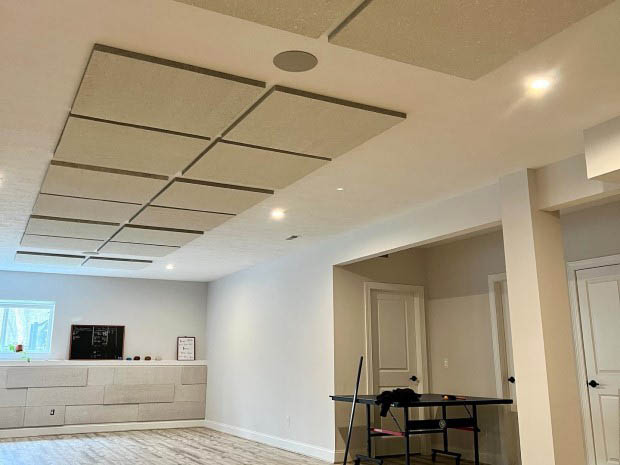Soundproofing allows you to enjoy a quiet and peaceful life without being bothered by outside noise. This increases the value of your home and ensures the well-being of all who live there.
To that end, this article explains how to protect your home from outside noise. Interested in learning more? Then read on.
Soundproofing Your Home
If you want to soundproof your home, the first thing to consider is the materials you need. This includes the materials for the walls, windows, and even the floors. It would help if you also thought about the décor you will need to achieve this.
Get Rid of all Holes
Since sound travels through the air, it is essential to block all gaps. Before trying any creative solutions listed below, it is best to place a brush under the door, and sticky draft strips around the windows. This will solve most of your problems.
Materials Needed to Soundproof Your Home
If you are building your home from scratch, consider building it with materials with soundproofing properties. A common choice of wall material is mineral wool, a porous material made of stone and glass that can absorb outside noise.
Other materials suitable for soundproof windows include double-glazing. This glass has a minimum thickness of 6 mm and insulates the inside and outside and vice versa. Also consider using window blinds. Keep in mind that thicker fabrics offer better sound insulation.
Soundproofing Your Home: Floors
When considering soundproofing a residence, one must also consider the floors. If you have a wood or laminate floor, you can install insulation made of rock wool panels.
You should also consider accessories such as thick fabric carpeting that absorbs sound. This is especially useful if you live in a multi-story building.
Sound-insulating Wallpaper
Another soundproofing option is wall coverings made of cork, wood, or polyurethane. Not only do they look good, but they also prevent outside sounds from entering the house.
Decorative Accessories
Options such as bookshelves are essential not only for storing books but also for blocking sound. They create a sound barrier between you and the adjacent wall. This applies to classrooms and studies as well.
In the bedroom, headboards made of upholstery or thick fabrics work well. Ideally, headboards should be padded or upholstered; the thicker the layer, the better.
Cushions, thick curtains, sofas, and ottomans are effective for soundproofing bedrooms and living rooms.
Soundproofing Ceilings
Soundproofing covers for ceilings have two functions: to block sound from one floor to another and to prevent outside noise, such as rain, from the top floor.
This requires using wooden battens or a false ceiling with insulation between it and the original ceiling. Wooden battens have the advantage of providing insulation during the cold season.
Suspended Ceilings Are Another Option for Soundproofing

Incorporate Fabrics Into Your Home
Fabrics are excellent sound dampeners, and you can never have too many of them in your home. First, consider curtains. Sound insulation depends on the thickness of the fabric and lining. Curtains should be hung in front of the window frame, preferably toward the floor. Larger carpets, seating plaids, and large amounts of cushions are also effective in blocking sound.
As you can see, there are several ways to soundproof your home. You can choose from various coverings, materials, and decorative elements to help reduce noise.
Remember, the more elements in your home, such as furniture and fabrics, the more they can help minimize noise and prevent reverberation. A house with almost nothing is an acoustic box that likes to reverberate sound. Don’t forget that doors also contribute to sound insulation! A sturdy door in your bedroom can help prevent outside sound from entering.




















One thought on “Soundproofing Your Home: Essential Tips”